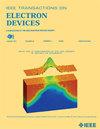多目标算法优化的c波段相对论后向波振荡器
IF 2.9
2区 工程技术
Q2 ENGINEERING, ELECTRICAL & ELECTRONIC
引用次数: 0
摘要
大功率微波源的参数在功率效率、工作频率等关键性能上表现出高灵敏度和不连续性。目前,常用的器件参数优化方法是粒子胞内仿真(particle in cell, PIC)和智能优化算法相结合,但仍存在快速功率提升和频率控制无法同时实现的问题。为了寻求有效的解决方案,本文在c波段相对论后向波振荡器(RBWO)的设计过程中,对人工智能领域内三种主要的进化算法进行了比较。通过采用OMOPSO和RSEA算法的分段优化策略设计方法,获得了一种新的RBWO结构。该结构的输出功率为2.3 GW,目标微波频率为4.3 GHz,在0.28 t磁场下的能量转换效率为46%。该优化策略具有优化速度快、优化效果好等特点。本文章由计算机程序翻译,如有差异,请以英文原文为准。
A C-Band Relativistic Backward Wave Oscillator Optimized by Multiobjective Algorithms
The parameters of high-power microwave sources exhibit high sensitivity and discontinuity regarding their power efficiency, operation frequency, and other key performances. Currently, particle in cell (PIC) simulation in conjunction with intelligent optimization algorithms is frequently utilized to optimize device parameters but there is still the problem that fast power ramp-up and frequency control cannot be achieved at the same time. In pursuit of an effective resolution, this article undertakes a comparison of three major classes of evolutionary algorithms within the domain of artificial intelligence during the design process of a C-band relativistic backward wave oscillator (RBWO). Through a new design method of segmented optimization strategy using the OMOPSO and RSEA algorithms, a novel RBWO structure has been attained. This structure attains an output power of 2.3 GW, functions at a goal microwave frequency of 4.3 GHz, and achieves an energy conversion efficiency of 46% in simulation under a magnetic field of 0.28 T. This novel optimization strategy is characterized by rapid optimization speed and favorable optimization efficacy.
求助全文
通过发布文献求助,成功后即可免费获取论文全文。
去求助
来源期刊

IEEE Transactions on Electron Devices
工程技术-工程:电子与电气
CiteScore
5.80
自引率
16.10%
发文量
937
审稿时长
3.8 months
期刊介绍:
IEEE Transactions on Electron Devices publishes original and significant contributions relating to the theory, modeling, design, performance and reliability of electron and ion integrated circuit devices and interconnects, involving insulators, metals, organic materials, micro-plasmas, semiconductors, quantum-effect structures, vacuum devices, and emerging materials with applications in bioelectronics, biomedical electronics, computation, communications, displays, microelectromechanics, imaging, micro-actuators, nanoelectronics, optoelectronics, photovoltaics, power ICs and micro-sensors. Tutorial and review papers on these subjects are also published and occasional special issues appear to present a collection of papers which treat particular areas in more depth and breadth.
 求助内容:
求助内容: 应助结果提醒方式:
应助结果提醒方式:


